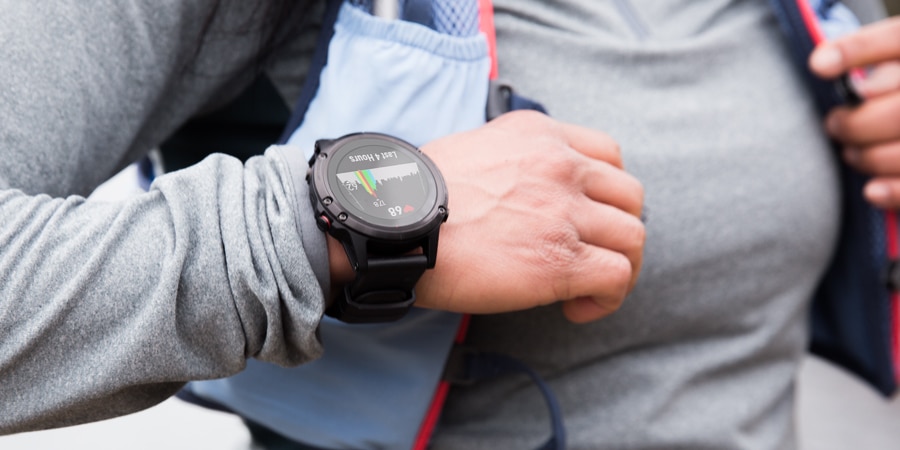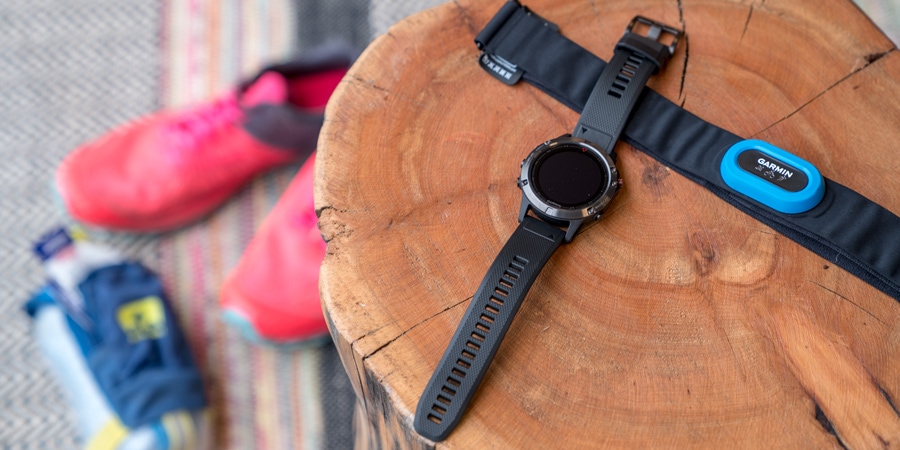If you're now the owner of a heart rate monitor (HRM) or some other tech gadget that displays heart rate, you may be wondering exactly what to do with all of the data it can deliver. Heart-rate feedback is an excellent way to monitor workout intensity and to put together training plans that help you improve fitness.
If you're still shopping for an HRM, read How to Choose a Heart Rate Monitor and How to Choose a Fitness Tracker for tips.
Key Heart Rate Data

Different HRM brands and models display heart rate data differently. At a minimum, a monitor will display your current heart rate. Most HRMs also display resting heart rate and allow you to train using heart rate zones that are preprogrammed, or heart rate zones you set up for yourself.
Before you begin training, it's helpful to understand some basics about data HRMs provide:
Resting Heart Rate
This is exactly what it sounds like—the rate your heart beats at while you're doing no activity whatsoever. It might vary from 60 beats per minute (bpm) on up to 100 bpm. Highly fit people are typically lower than 60 bpm, while endurance athletes might be below 50 bpm. If your HRM doesn't record this value for you, you can determine it yourself by checking your current heart rate after you've been at rest for an extended period—checking it right after you wake up is ideal.
A variety of factors, like age, gender and even medications you take, go into your resting heart rate, so don't worry too much about what your resting heart rate is initially. As your fitness improves, though, your resting heart rate will get a little lower. So you should check it when you first get your HRM and then periodically after that to see if your fitness is improving.
Recovery Heart Rate
This is the amount of time it takes for your heart rate to return to its resting heart rate after vigorous exercise. It's similar to resting heart rate in that, if it improves (recovery time shortens), that's a sign that your fitness is also improving. If your HRM measures this (not all of them do), then keep an eye on it to see if it improves over time.
HR Max (Maximum Heart Rate)
This is the absolute fastest rate at which your heart is able to beat. It's also the key spec for setting up your personal training program. Not all HRMs measure and display HR max; if yours doesn't, then it's a good idea to calculate yours (see below) so that you can set up an exercise program that's precisely synced with your body, age and fitness level.
Heart Rate Training Zones
As your training gets more intense, your heart rate rises, so a good way to control exercise intensity is to tie training levels to specific heart rates. Heart rate zones are simply ranges of heart rates that correspond to intensity levels you choose to train at.
How to Calculate Your Maximum Heart Rate (HR max)

Calculating your personal HR max can be done a number of ways, including the following:
- Use an age-based formula: The classic 220 - your age formula is now considered inaccurate for older people. A revised formula, 208 - 0.7 x your age, is better, but is still based on a statistical analysis of large numbers of other people's lab test results. Formulas like this also miss the mark because factors like genetics, physiology and certain prescription meds can lead to different HR max results for people who are the same age.
- Get a stress test in a lab: This involves your cardiologist setting up a session; or, if you aspire to be a world-class athlete, heading to an elite training facility. Some universities might also do a stress test if you agree to be part of a study they are conducting.
- Do your own field HR max test: If your doctor gives the okay, you can do a field workout that gets your heart up to maximum intensity. Short of a lab test, this is the best way to get a result that accurately reflects your personal factors and physiology. Below is one example of a DIY HR max test:
- Run as fast as you can for 3 minutes.
- Rest for 3 minutes.
- Repeat the 3-minute hard run again. The highest reading (which should be from the second run) will be your HR max.
Note that there is no one best test to determine HR max. You can find a range of test ideas online. To get the most valid result regardless of test method, you should be energized and well rested, then warm up adequately and push yourself to truly reach your maximum-effort threshold at some point during the test.
HR Max Do's and Don'ts
- Do test it via the specific activity you plan to do: Your HR max is lower when you cycle than when you run, for example, because cycling places different physiological demands on your cardiovascular system.
- Do recheck HR max periodically: It decreases as you age. It can also increase slightly as you train because you're better able to mentally push your intensity level and better able to physiologically respond to increased intensity.
- Don't train to increase HR max: Better indicators of fitness improvement are resting heart rate (RHR) and how quickly your heart rate returns to its resting heart rate after exercise. Your HRM should be able to measure both of those for you.
Heart Rate Training Zones
Efficient training plans utilize heart rate training zones, which are calculated in relation to your HR max. One option for working out with your HRM is to simply follow one of its predefined workout routines without thinking deeply about the underlying heart rate data that your device uses to set up and monitor zones associated with your workout.
HRMs also give you the option to set up your own heart rate zones from training plans you've found and want to follow. Names associated with heart rate zones and heart rates that define them vary—sometimes it can seem like there are as many variations as there are coaches. The key is that different heart rate levels engage different aspects of your physiology, and a good training plan will work in multiple zones to improve overall performance.
The American Heart Association offers a two-zone breakdown to simplify things for people who might be embarking on a new fitness regime:
- Moderate intensity: 50%-70% of HR max
- Vigorous intensity: 70%-85% of HR max
If you've been sedentary for a while and are beginning a new exercise program, first check with your doctor, then start out in the moderate zone. As you become fitter, you can do some training in the vigorous zone.
Eventually, you can transition to training plans that use a multi-zone approach. Below is one example of multiple heart rate zones that can be used for training:
Zone 1 | 55%-65% HR max | Used to get your body moving with minimal stress and exertion. This zone might be used for an easy training day, warming up or cooling down. |
|---|---|---|
| Zone 2 (aerobic/base) | 65%-75% HR max | Used for longer training sessions, you can sustain this basic-effort zone for many miles, yet still chitchat a little bit with your workout partner. |
Zone 3 | 80%-85% HR max | This is a zone where you push the pace to build up speed and strength; conversation is reduced to single words. |
| Zone 4 (lactate threshold) | 85%-88% HR max | In this zone your body is processing its maximum amount of lactic acid as a fuel source; above this level, lactic acid builds up too quickly to be processed and fatigues muscles; training in this zone helps your body develop efficiency when you're operating at your maximum sustainable pace. |
| Zone 5 (anaerobic) | 90% HR max and above | This maximum speed zone (think closing kick in a race) trains the neuromuscular system—your body learns how to recruit additional muscle fibers and how to fire muscles more effectively. |
Using perceived effort: If you develop a sense of your perceived effort for each training zone, you can spend less time staring at your HRM display and more time experiencing your activity. In order to help you develop a sense of perceived effort for each of your training zones, you can set your HRM to alert you whenever you're above or below the heart rate for the zones you'll be training in.
How to Use Target Heart Rate Zones in a Training Plan
A typical training plan utilizes multiple training zones. You won't train in each zone for an equal amount of time, though. The time you spend in each zone will vary, usually with more time spent in lower heart rate zones. Here's one example of how a training plan might allocate your time spent in each heart rate zone:
Zone 1: 30%-40% of your time
Zone 2: 40%-50% of your time
Zone 3: 10%-15% of your time
Zone 4: 5%-10% of your time
Zone 5: 5% of your time
A typical training plan will designate precisely how much time you spend in each training zone. As mentioned before, not all training plans use the same exact zones. If you were preparing for a 5K or 10K trail running race and wanted to follow this training plan, for example, you'd need to set up your device with heart rate zones that are in that training plan.


